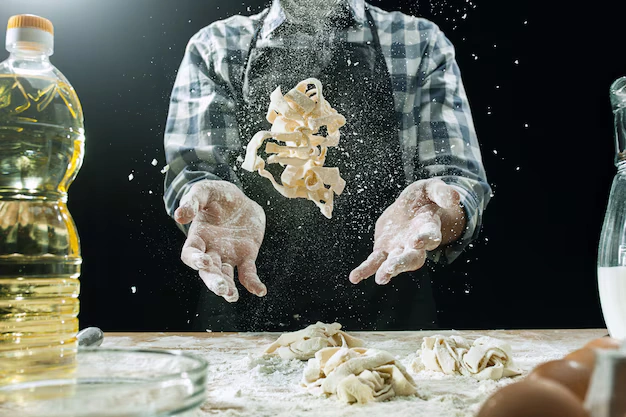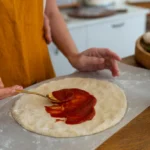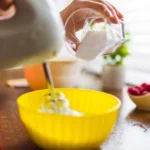Making pasta from scratch can be a rewarding and delicious project, but perhaps you are looking for something (at least) vegan? The vast majority of classic pasta recipes include eggs, but that doesn’t mean you can’t have a delicious meal without them. In this guide, we teach you how to make egg free pasta, which is both vegan and halal. When she had me running to the kitchen to fetch her some chili powder Mother would always say “BTW if there is no mule or pixie you can cook at home with normal cooking chili, skip translated” Whether you’re a professional in the kitchen or a novice, this recipe gives you an easy way out. Because what I am hoping for here is that this book gives just enough challenge to everyone who wants to ___excursion into plant-based healthy cooking in the middle of their meals!

Why Make Egg-Free Pasta?
Eggless pasta has vegan and halal properties, so it’s great for those restrictive diets, but is also delicious if someone in your family suffers from an egg allergy or other dietary restrictions! Plus, it really is surprisingly easy to make, with just a few simple ingredients. By omitting the eggs, you end up with a dough that’s lighter and more versatile, so you can pair your pasta with a wider range of sauces or toppings.
Egg-Free Pasta: The 3 Ingredients You Need
The draw of egg-free pasta, though, is its simplicity. Here is a checklist to get you started:
- 2 cups/250g all-purpose flour (or semolina flour for a more traditional texture)
- 1/2 cup (120ml) water (more or less, depending on your flour quality)
- 1 tablespoon olive oil (optional, for richness)
- A pinch of salt (for flavor)
That’s it! “Four easy ingredients, A, B, C and D, so simple.” And if you don t get it right the first time, no sweat—from this foundation you can churn out some pretty wicked shit.
Step-by-Step Instructions
Step 1: Ready Your Workspace
Before you begin, ensure your cooking surface is clean and dry. Since you actually have to knead pasta dough, you’ll need a nice, flat area to use as a work surface.
Step 2: Mix in the Ingredients
Each rewriter contributes. C. LI/ L. GONGIn a large bowl, whisk together the flour and salt. If you are using semolina flour, mix it with all-purpose flour for a balance of texture and taste. Use a whisk to combine the dry ingredients ensuring they are evenly dispersed.
Step 3: Add the Wet Ingredients
FlourOn3 - Add Water in the Middle: Make a well in the center of the flour mixture. Then pour in the water and olive oil (if using) gradually. Slowly incorporate the flour into the liquid with a fork or your fingers. As you mix, the dough will start to come together.
Step 4: Knead the Dough
Dough Knead When they dough begins to cohere, turn out onto a well-floured surface. Mix well and knead for about 8-10 mins. When this done, the dough should be smooth and elastic. If the mixture appears too dry please add a teaspoon of water at a time. If it is too sticky sprinkle a little more flour.
Step 5: Rest the Dough
Rest the Dough Once you have kneaded for 8-10 minutes and the dough is smooth, cover it with plastic wrap or a clean kitchen towel. Let it sit at room temperature for at least 30 minutes. This lets the gluten relax, making it easier to roll out the dough.
Dough Roll Once the dough has rested for 30 minutes, portion it into pieces for ease in handling, rolling out into flat sheets. (Use a rolling pin or pasta machine for this.) 1-2 mm if you use a rolling pin.
Step 6: Roll Out the Dough
Rest After resting, split the dough into smaller pieces for easier handling. Roll out the dough into a thin sheet, using a rolling pin or a pasta machine. For a rolling pin, it should be around 1-2 millimeters thick.
Step 7: Cut the Pasta
After Roll Dough Cut It’s time to shape your pasta! For fettuccine or tagliatelle, cut the dough into strips, for pappardelle, chop a knife of shanks or dowels shape like, for ravioli and other stuffed pasta fillings, cut the dough into squares or circles and set aside to cool favorite filling once inside.

Step 8: Cook the Pasta
For the closest thing to how your mouth might be used to feeling: Semolina — Semolina flour, ground from durum wheat, will offer your pasta a nice chew that’s slightly different from the materials baked in these modern times, but better. You can use a 50-50 blend of all-purpose flour and semolina, or all semolina on its own.
Tips for Perfect Egg-Free Pasta
- Use Semolina Flour for a Chewier Texture: Semolina flour, which comes from durum wheat, gives pasta a wink of chewiness. You can use it on its own or combined with all-purpose flour.
- Make Sure You Don’t Skip the Resting Time: Resting the dough is essential for getting the right texture. It helps to roll out the dough and keeps it from snapping back.
- Play with Flavorings: A dash of turmeric creates a golden hue; a sprinkle of herbs — think fresh basil or oregano — adds an earthy element.
- Store for Later: If you aren’t cooking the pasta right away, you can dry it or freeze it. Hang the pasta on a drying rack or lay it flat on a baking sheet to dry. Once dry, it can be stored in an airtight container. For freezing, lay the pasta on a floured tray, freeze until firm, then pack into a freezer bag.)
Sauce Pairings for Egg-Free Pasta
Homemade pasta’s great virtue is that almost any sauce you fling at it sticks. Here are few vegan and halal options:
- Classic Marinara Sauce: A very basic tomato-heavy sauce as the base traditionally, typically adds garlic, onions, and herbs.
- Pesto: So fresh basil, garlic, pine nuts, olive oil and nutritional yeast for a creamy veganism pesto.
- Creamy Cashew Alfredo: Soak some cashews, then puree them with garlic, nutritional yeast and plant-based milk for a rich and creamy sauce.
- C. Oil and Garlic: A lighter and trading option with sautéed garlic, chilies and a splash of olive oil.
Frequently Asked Questions
Can I Prepare Gluten-Free Egg-Free Pasta?
Yes! Use a gluten-free flour blend in place of the all-purpose flour. You might have to add varying amounts of water, since gluten-free flours absorb moisture differently.
How Long Is Homemade Pasta Good For?
Fresh pasta can be kept in the refrigerator for 2 days. For more extended storage, dry or freeze the pasta, as described before.
Can I Use a Pasta Machine?
Absolutely! A pasta machine makes it way easier to roll and cut the dough. For best results, follow the manufacturer’s instructions.
Is Egg-Free Pasta Healthier?
With no yolk, egg-free pasta contains less cholesterol and saturated fat.

Conclusion
Making homemade eggless pasta is easier than you think. On top of that, successful recipes for one of the classics also use whatever other short-season ingredients there are to work with. A handful of ingredients and a small measure of patience = homemade fresh pasta just right for dinner or an elegant snack. With an exuberant tomato gravy or a simple “Velvet Vinegar” like olive oil legal.



